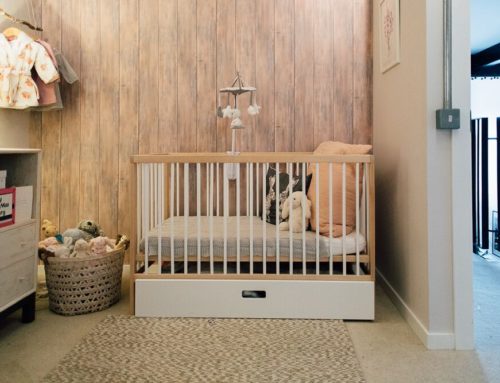Last week a fairly mammoth conversation took place on our internal work messaging system. It’s not the first time that this topic of conversation has cropped up but it was the most in-depth and rather revealing exchange to date. In fact it was so interesting that I promptly informed Ste all about the ins and outs of our chat when he got home later that evening. And the subject of our discussion? Well I’m sure it’s a topic that’s cropped up all too often in your own lives too…the cost of childcare!
I don’t mind admitting that the amount that Ste and I spend on Hector’s childcare each month is equivalent to our monthly mortgage payments. In fact writing that makes me wince a little bit, although I know from conversations held with other mums that Hector’s nursery is very reasonably priced indeed. Please don’t misunderstand me, this post isn’t about to venture down a path where I start complaining about whether I think charging such amounts is justifiable or not – personally I think what Ste and I fork out is worth very penny – but that’s not to say that my eyes don’t water slightly every time the bill comes through.
I knew vaguely that there was some form of financial help for childcare costs once Hector turned three but that was about the long and short of it. And then when I asked friends and the RMLtd girls what the deal was, each and every one of them said something different. Which posed the question… how much childcare financial help was I actually entitled to? How did it work? Where did I apply for such help?
Today’s post then is written with the intention of clearing things up a bit (with the guidance of Hector’s nursery bursar I should add!) so that if any of you are wondering what help is available then this might be useful to you. I should also caveat the below with the fact that I’m not an expert and that if you are unsure about the intricacies of how the scheme works at your own childcare provider then it’s worth asking them for more details.
Ok so let’s look at the cold hard facts…
What The Government Say
- All 3 to 4-year-olds in England can get 570 hours of free early education or childcare per year. It’s usually taken as 15 hours a week for 38 weeks of the year.
- Some 2-year-olds are also eligible.
- The date you can start claiming depends on your child’s birthday. You will be able to start claiming for financial help from the beginning of the term on or after their third birthday. For example Hector turns three in October so we wouldn’t be able to claim until the Spring Term commences i.e. January 2018.
- The free early education and childcare must be with an approved childcare provider.
- It stops once your child starts reception class in a state school.
The Reality
Hector attends nursery for three mornings and one longer day a week. Initially I thought that the free 15 hours would just be deducted from the sum total of the number of hours a week that he attends but having chatted with the Nursery Bursar it appears that it’s not quite as simple as it first appears.
At Hector’s particular nursery, funding is awarded in 2.5 hour blocks which can be applied to one session in the morning and one session in the afternoon. Therefore if Hector for example attended 4 mornings a week from January 2018, he would be entitled to just 10 hours of funding (four morning sessions i.e. 4 x 2.5 hours). However, if Hector attended for 3 full days or more he would receive all 15 hours of funding (5 hours per day).
But this isn’t necessarily the case for everyone. According to educational charity, the Pre-school Learning Alliance, the true cost to provide the childcare is typically £4.53 per hour but the Government currently allocates £3.53, an underfunding of 20%. And average childcare costs vary wildly all over the country depending on geographic location; for example what Fern pays for Elle’s childcare is very different to what Laura forks out for Bertie’s.
However from April, the Department for Education (DfE) is introducing a new approach to early years funding for three- and four-year-olds to try to make the way that funding is distributed between different local authorities and different providers fairer. If you want to find out the funding rates in your local area then The Pre-School Learning Alliance have a handy calculator on their site.
In short though I wanted to make it clear that 15 free hours of childcare doesn’t necessarily equate to 15 clear cut hours at your own childcare provider. I would strongly recommend speaking to your nursery/childminder/playgroup to find out how it would work for you and what you’re entitled to.
What About The Proposed Increase To 30 Hours?
You may have heard that that the Government intends to double the amount of free childcare to 30 hours and will roll this scheme out across the country later this year. It’s worth mentioning that this 30 hours free childcare applies only to 38 weeks per year and not 52 weeks.
The Government has been rolling out a pilot scheme in 8 English areas: Wigan, Staffordshire, Swindon, Portsmouth, Northumberland, York, Newham and Hertfordshire. The scheme is scheduled to go nationwide later this year in September.
Will my child get the 30 Free Hours?
Not necessarily as not everyone is eligible. But everyone will still receive the 15 hours free childcare that is currently available.
Eligibility rules for 30 hours free childcare:
- Your child will be aged 3 or 4 when the scheme starts in your area.
- Both parents must be working – or the sole parent is working in a lone parent family.
- Each parent earns, on average, a weekly minimum equivalent to 16 hours at National Minimum Wage or National Living Wage.
- Each parent must have an annual income of less than £100,000.
- You must live in England.
Will all nurseries offer this?
Most will – but some nurseries may not be able to offer the flexible 30 hours free childcare.
The 30-hour scheme, like the universal 15-hour offer, is optional and the government has confirmed that providers will not be penalised for opting out. Providers who opt not to deliver the 30-hour scheme can continue to deliver the existing 15-hour offer.
Providers can offer the extended entitlement in part (i.e. less than 30 hours but more than 15 hours). Similarly, parents do not have to take up the full 30 hours – if an eligible parent wants to take up, for example, 22 hours per week, these will still be funded.
The nursery industry has expressed their concern that the grant supplied by the Government is not enough to cover the costs of the current scheme. So while nurseries can’t charge for the 30 hours, they can charge for other ‘extras’ or ask for contributions such as to cover the costs of nappies/lunches/activities.
At the moment Hector’s nursery have not decided if they will be participating in the 30 hour scheme despite committing to the 15 hour provision. Fingers crossed they will!
If you want to read more about either the 15 hour or the 30 hour childcare schemes then I would strongly recommend heading over to the Childcare Costs page on the Government website which you can read here or head over to Pre-School Learning Alliance for more in-depth detail.
I hope today’s post has helped to clarify how both schemes work; please feel free to chip in if you think I have missed anything important. Do any of you currently claim help with your childcare costs? How does it work for you? Are you in a pilot area and will you be taking advantage of the 30 free hours on offer? Did you even know that this help was available? From a personal perspective I can’t say that I think much about the promotion of either scheme. In my opinion more exposure is required to make parents aware of the financial help on offer to them. I’d love to hear what you have to say….













Thanks so much for exploring this issue, Lauren. It’s something on my to-find-out-about list having a 2 and a bit year old.
I did not know that the 30 hours was optional for providers. I can’t see many taking it up? Why would they if it means there’s a shortfall in covering their costs? Surely only providers who have more spaces than they can currently fill would see the benefit in offering this as an enticement? The good nurseries round here are full/have waiting lists. Or perhaps once some start offering it, the rest will feel they need to follow suit? I guess only time will tell.
I imagine the entitlements are the same for the self-employed? I’m sure a quick search would answer that question but somehow whenever I’ve looked into it I’ve not been able to feel confident I understand the ins and outs.
We’re lucky that we have an ofsted excellent rated forest school nursery/preschool nearby that is run as a charity and so is extremely affordable. I need to provide nappies/lunch etc but that’s no issue. I’ll be interested to hear what their policy will be regarding the 30 hours, it’s never crossed my mind what their stance might be being as I thought it was going to be something all nurseries would offer.
Nor did I know about the 2.5 hour block thing. Complicated much?! I need to have a good chat with our Lead Practitioner!
One positive though, you’ve promoted me to check our county term dates, and discover Fern’s birthday is 3 days before the start of spring term. Nuts to think that my friends with toddlers birthdays a few days after will miss out on a whole term of funding…..
*prompted me. You can promote me if you like. From current lowly status as chief bottom wiper and general toddler wrangler…
Hi Philippa – lots of good questions here. Yes the entitlements are the same for the self-employed. Not sure if all nurseries will take the same approach as Hector’s however re the 2.5 hour block – I guess it will just be a question of asking your own nursery in question. I did wonder if the 30 hours was a gimmick used by the Conservatives to entice the electorate and only when people truly looked into it they’d see how caveated it was. Time will tell! And lastly lucky you with Fern!!!
Thanks for the clarification Lolly because this subject has come up so much in my group of friends recently because a lot of us are paying for a lot of childcare (me 4 days) & financially i guess we all want to know what the difference will be. It’s good to hear that if the nurseries think financially it wouldn’t work for them they can stick at the lower level because we really want the help but wouldn’t want our nursery to go out of business. However, I think it’s really good the government are offering a bit more help because like you Lolly are nursery fees are the same as our mortgage!!
It’s crazy isn’t it Nicola! It does make me wonder what the hell I spent my money on before!
We are getting the 15 hours from April. Bit gutted though if Zach had been born 9 hours earlier he’d have had the funding from January. I think though we will have to start paying for his meals though when the funding starts but anything to get the costs down. It has to help financially especially with it costing a good deal more than our mortgage
Gutted Helen! Nine hours?! Time is crucial isn’t it when it comes to these types of thing. And I’ve heard for many people that their childcare costs exceed the amount they spend on their mortgage. It’s a kicker isn’t it.
This is really helpful to know, I have friends in the same position with two year olds and they aren’t quite sure what the rules are apart from a vague mention somewhere of free hours! We aren’t at the choosing nursery stage yet (let’s wait until the baby is out in the world before we get on any waiting lists haha) but I imagine these sorts of things might influence our choice (as much as that’s possible with rules and opt-ins changing all the time) of nursery as it would Ideally be great to choose one that opts in to all of these things, though of course I imagine the ones who opt out of the 30 hours will unfortunately be the ones with parents who can afford to keep paying without the option of the 30 hours, sadly enough.
Thanks again xx
Who knows India; I’m very intrigued to see which nurseries will offer the 30 hours options – as are the rest of the RMLtd team. Pleasure I could be of help xxx
Honestly this is so confusing, we’re on our third month of the 15 hours free childcare and it is not straight forward for us or our childminder. As you say the 15 hours are applied for specific weeks, not all the days in the month our son is in childcare. The rate our childminder is given does not cover her usual charge (and her rate is very reasonable) so we’ve had to agree a higher rate for the “free days” in order that our childminder doesn’t lose out. We still benefit over all, but the length of time it takes our poor childminder to work it out at the variable rates and put it in an email to us is ridiculous, it should be so much simpler.
Blimey Agnes it does sound like a complete minefield. I agree the whole thing should be much much simpler. It’s great though that your childminder has signed up for the scheme xx
Was really excited (sad i know) to see this post as we are just looking into chilcare etc but disppointed it is all about what one is entitled to in England! What about the rest of us British readers. Sad face, not very helpful RMS x
Hi Rachel…which part of the UK do you live in? There are plans to do subsequent posts for different areas within the UK but trying to condense them all into a single post was proving too unwieldy and confusing! Stay tuned for more information coming to your screens soon. In the meantime Sara (who has commented below) has added some very handy information about the scheme in Scotland. Not sure if this is where you live but will prove handy to other Scots reading xxx
It is such a confusing area! Our nursery fees have just gone up (starting in April) so we will now be paying more in nursery fees than our mortgage. Although I do get childcare voucher scheme from work, so that does save us a little bit as they come out as a ‘salary sacrifice’, so I save a bit on tax/NI.
Our nursery will be offering the 30 hours free, but what they do is pro rata it over 52 weeks, similar to the way we pay fees, so we pay the fixed amount each month regardless of how many weeks that month has. The free 30 hours is split in the same way, so we are still paying the same amount each month, we wont actually get 30 hours a week, but it will reduce our costs by almost half! depending on how we choose to use them, we might have to pay a food supplement, but it depends on how you decide to do it (i.e. fully day or half day or shorter day 9-3).
It is a minefield – our nursery actually held an open evening talk to go through it and answer questions.
I used to think that nursery fees were extortionate, however, when you think about it, £45 a day to look after your pride and joy, feed them, care for them, provide them with numerous activities in the day, its not actually that bad! Our nursery provides additional activities like a football coach and a music coach for no extra cost.
How annoying that your nursery fees have gone up Claire! Do you think this is linked in some way to the introduction of the free 30 hours? I think your nursery has been incredibly helpful though to hold an open evening and this is something that I think all larger childcare providers should really be thinking about doing. Also LOVING the fact that your nursery provides football and music coaches; that’s amazing!
Yes it is amazing, my son loves football and music so it’s win win all round! They put fees up marginally every tax year, it’s not much but does add up to an extra £40 a month. Luckily other areas of our bills have gone down so it all equals out in the end. They are constantly making improvements to the facilities and doing extra stuff so I understand why they do it.
Great post! I’ve been following the changes closely too! With two under two (plus a 6yr old) and being self employed it’s a big deal for me. I agree about the point made regarding how it can’t make financial sense for the nurseries to want to opt into it?! Especially the expensive private ones! What do they gain from it? Any nursery managers out there want to let us know?! Lol anyhow, the nursery attached to my eldests school has confirmed they are offering it and amending their hours to accommodate it. We can use it flexibly am or pm session (with a packed lunch) there day runs 830-330. My two year old is currently in a community centre nursery and they haven’t made any announcement about what they are going to do, which is not good for us, they seem to be waiting to see what everyone else locally is doing! In the meanwhile I’ve had to sign my little one up to the school nursery as they have their ducks in a row already. 30 hours is going to be a big help for me! I just wish they’d do it from 2!!
Just to confuse things more, the system is entirely different in Scotland!
Here 3 and 4 year olds are entitled to 600hrs of childcare a year which equates to 16hrs a week during term time. Like in England, your nursery has to be approved by the Care Inspectorate to receive funding.
Two things to bear in mind when doing the calculations:
1. it is only childcare in term time, so the 16hr provision we receive actually only breaks down to 1 free day of nursery a week for us
2. Funding is not automatically credited to your childcare bill. Our nursery still charge us the full amount each month. They then receive credit from the government 3x a year which is refunded to us by cheque. We’re fortunate that we can afford to pay the bill in full but I imagine it must be frustrating having to find the money and wait for a rebate 4 months later!
Also, also, also!
There are tax deductible options available. Until fairly recently your employer could sign up to the childcare vouchers scheme, which means that you can take a set amount per month (up to £243 for standard rate taxpayers) out of your pre-tax salary – so essentially gaining approx 30% on the pound. This is changing and I’ve not kept up to date with it as we’re staying on the old scheme, but it is there and every little helps!
We’re lucky – our preschool will be offering the full 30 hours (although my big girl starts school in sept and the little one isn’t entitled for another couple of years yet) and it’s fully funded for the 2.5 days she attends so we don’t have to jump through any hoops. When I was working full time our childcare bill (for ONE) was over a grand a month – and that wasn’t with one of the more expensive providers either. Weighing up whether to go back to work after number two was difficult as I’d pretty much be earning to pay nursery and run my car! Not so much incentive.
A number of other European countries have a lot better support than we do too. My stepsister in Germany has her monthly bill capped at about 250€ – for three children!
Thanks for sharing all of this info Sara! It’s actually so incredibly useful although your comment about monthly childcare being capped in Germany made me want to cry! If only ours was capped too!!!
I’ve been counting down the days til Sept 2017 – I have two twins in nursery and financially desperate for their ‘free’ hours, especially as my new baby will start nursery soon after that. Even if the nursery do offer the 30 hours I can’t see that I could afford to put them in for more than two days based on the current ‘top up charge’ for food etc, and that is have to pay normal price for school holidays. Personally we would have benefitted from the 15 hours staring at a younger age rather than extra hours soon, would’ve been much less stressful
I agree Hayley. To have the help now would be much appreciated rather than having to wait (in my case) until Jan 2018! I imagine that so many mums with more than one child will especially be feeling this!
Definitely – childcare vouchers!!!! I am not entitled to anything else at all (sob) so my husband and I have jumped at the chance of childcare vouchers as we are both able to get them. But this is about to change too, with a Government version taking over, which means fewer savings for those on higher tax I believe (although anyone in the existing system can stay). Honestly, it is all so confusing, I bet if you were to survey everyone in the UK most would not be receiving all the potential benefits they are entitled to for childcare. And don’t get me started on the cost of childcare, in London it is beyond eye-watering… But I love that me LO is happy, and they do loads of stuff – music, ballet (or rather “ballet” given they are mainly aged 1-3?!), sports, lots of trips to the park etc. We really have lucked out. For the 15 free hours, in London quite often that just means a slightly reduced bill each month, as the amount the Government pays doesn’t come close to the hourly cost for the nursery. But I’ll take a slightly reduced bill any day!
Anything for a reduced bill Annie! A friend of mine lives in London and another in Surrey and their monthly respective childcare costs are almost triple mine! As I mentioned above, even within the RMLtd team, there are huge differences in what we pay as we’re scattered all over the country. It’s incredibly interesting but completely disheartening if you live in an area where the fees are extortionate. The government are looking to address the funding differences in different areas from April – The Pre-School Learning Alliance have a handy calculator on their site which shows the differences per hour for all the different areas in England if you wanted to check it out.
If you are already in the vouchers scheme I think you can stay in that scheme despite the new one coming into place x
I was just going to say this; you can absolutely stay in the current scheme if you’re already in it.
I think this is company specific, but I’d recommend anyone who is pregnant talking to their HR/benefits team now to check if it applies; I work for a very well known company and when you are on mat leave they make up the cost of childcare vouchers when you are only receiving statutory mat pay, so it’s like having a few months free x
My daughters pre-school are offering the 30 hours either as three full 10 hour days or 9-3 5 days a week.
Others we saw deduct it at source like some of the commentators have said above so will take off the £243 off the monthly bill.
And HA to the commenter that said £45 a day. Guess you aren’t in London. Ours was £130 a day…..and they wonder how people afford to go back to work?
Wow Rebecca! £130 a day?! That is eyewatering!
Yes I’m definitely not in London and by the sounds of it, Thank god!
haha! i read it too, and my first thought was ‘not in London’
I’ve just inquired about putting my twin girls in for an extra HALF day at nursery, to give me a break .. £120 for both 🙁
Just a quick comment to say that in Wales 3 year olds start a nursery at school for half (or slightly less) days so that would equate to a similar amount of free childcare. However a lot of nurseries charge you the full day rate to drop them off and pick them up so if anything, it’s more of a hassle depending on your working hours etc.
We’re in the same situation in Wales – you can’t just get the 15 hours deducted from your bill, they have to go to a state school nursery for 2.5 hours a day. As I’m in work for three days, how am I supposed to get them there / pick them up? It’s much easier and only slightly more expensive to keep them in private nursery until they’re able to start reception, even though now I have two I’m paying more in childcare than I earn! And I have a good salary!
Another Scot here trying to figure things out! My little girl is only one but we were unsure what was available/what we were entitled too. I found this link helpful
https://www.gov.uk/childcare-calculator
I’d be really interested to hear if anyone has gone down the nanny route? It is something I’m considering and haven’t looked into beyond some minor googling. Would be really interested to hear of others experiences.
I’m not sure how helpful this will be, as it’s not personal experience, but a friend has just recruited a nanny/housekeeper in the run up to her second baby. I have no idea how much she is paying and I’m pretty sure I couldn’t afford it with my exorbitant mortgage, but her nanny is a godsend. She works every weekday morning 7-1 then again 4-7 every evening. Cleans and cooks for the whole family! She’s an ex nursery worker so is fully qualified. Definitely worth looking into if you can afford it!
Another friend had a live in Spanish au-pair for a while – it all seemed a bit of a dodgy deal tbh. They only paid her £100 a week (plus free board and food). she did eventually do a runner with some spendy electronics though….
? sorry! Wasn’t expecting that Spanish story and it’s tickled me! ?
Maggie, a lot of my friends have nannies. Costs in London are around £50k by the time you factor in tax and NI and £30k outside of London (specifically North West) including the same. Around £2k for a nanny agency finders fee.
Nanny shares seem really popular – either sharing days so one person has 3 days, the other family 2 days. Or where one family hosts all the children at their house. If you do this get a legal agreement drawn up between the families as well as with the Nanny!
Thanks Rebecca and Jo. Very helpful. Must get self organised to fully investigate!
A very interesting and informative read, thanks Lolly. My son will get his free 15 hours (hopefully 30) in September. We are very lucky that he is only at nursery 1.5 days a week and so get off ‘lightly’ with £318 per month. (we both use the child care vouchers scheme through work which helps too)
I think we will still pay for food and the nursery can choose which hours are ‘free’ and so it may just be school hours. Am eagerly awaiting my friends letters from nursery with their re-calculated bills as their children are a little older and get the free funding at Easter.
Interesting to see how other parts of the UK work. We are in Scotland and our experience is that it is organised in different ways in different council. Would recommend this website to anyone in scotland seeking advice – https://www.scottishfamilies.gov.uk/.
God this is a conversation that could run and run. We are very fortunate that our nursery will be opting for the 30 hours as of September and seeing as Sofia only attends 2 days a week it should be hugely beneficial to us, especially as I am due to pop with baba #2 in a few months. Eek!
Not sure if anyone has mentioned this above but the Gov are also introducing a new scheme in a few months (supposedly). This will be tax-free childcare, basically an equivalent to the child care voucher schemes some companies offer. As a self-employed person this is very interesting, it appears that as long as both of the parents are working over the minimum hours you are entitled to set up an account where the Gov will add 20% of whatever you pay in. Handy!!
Here is the link if anyone is interested (not well advertised at all, I hadn’t heard of it until the nursery gave me a letter!). https://www.gov.uk/government/news/tax-free-childcare-10-things-parents-should-know
x
This is a really helpful/interesting post.
Our daughter turns 3 in May so will be starting pre-school in September (currently mainly at home with her Dad but probably 40% of the time at a very patient and flexible local childminder). The one we’ve applied for have announced that they will be offering the 30 hrs a week (term time only) free childcare which my husband and I are eligible for. We’ve applied for a full time place (8.30am – 3.15pm, Mon to Fri) so if she gets in, that will ALL be covered apart from £5 for the lunchtime club (which has always been chargeable, that hasn’t changed).
With twins due in May, I’m praying she gets a place as I don’t have a plan B! Anxiously waiting until places get announced in April and will take it from there….
x
Such a complicated system, I haven’t read all the comments so may have been discussed already You made me double check as thought I’d mis read but it’s worth noting that the new 30 hours scheme differs from the 15 in the fact if you choose to they can be spread accross the year 23 all year or 30 term time only you don’t have to use them solely in term time. Which is especially good for those that attend less hours or nurserys that limit their use.